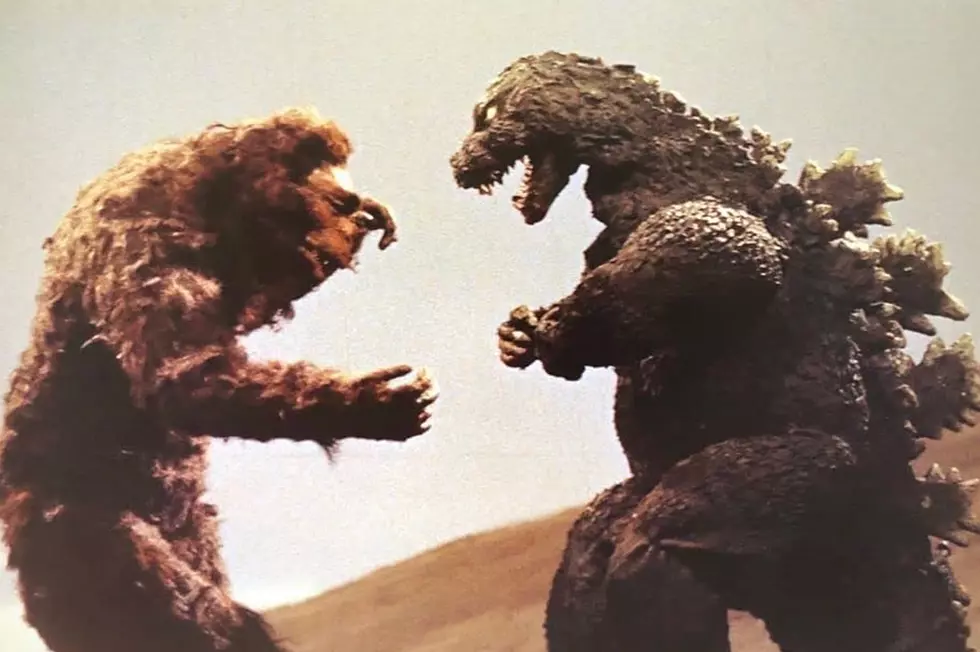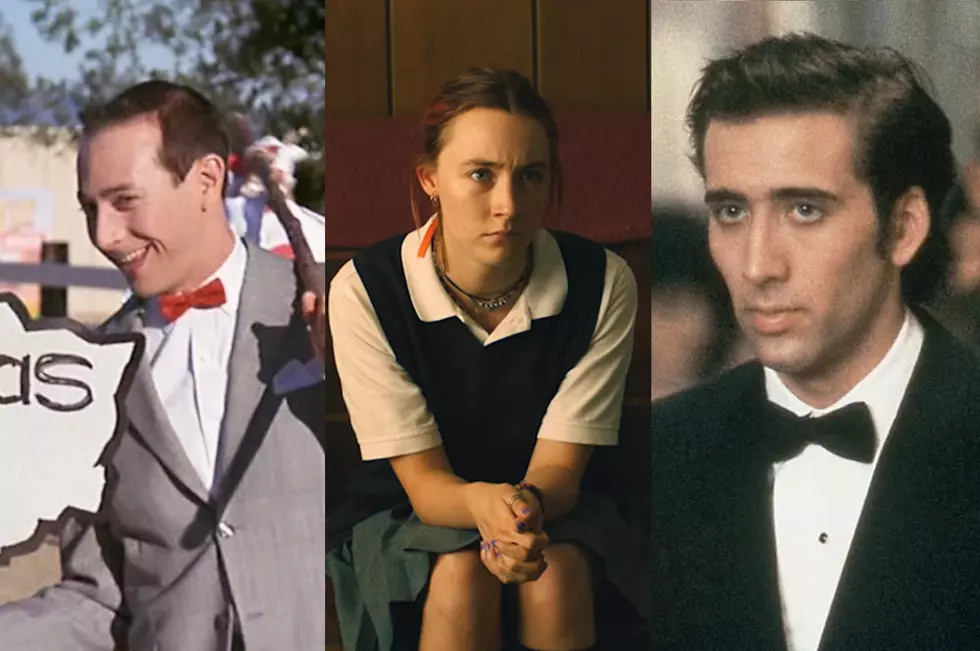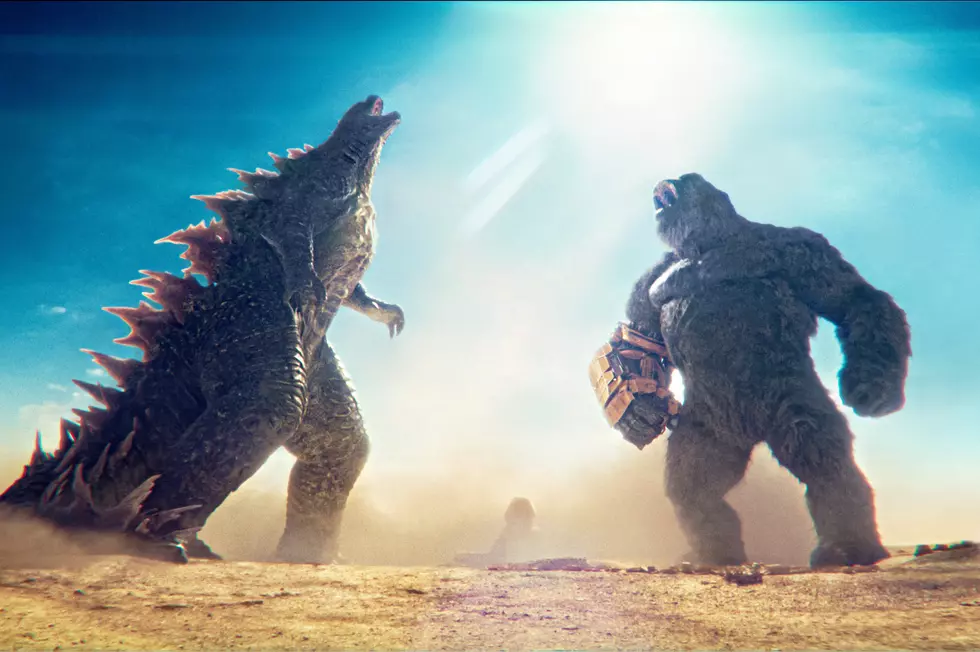
‘King Kong vs. Godzilla’s Multiple Endings: The True Story Behind One of Movies’ Biggest Urban Legends
It was one of the boldest ideas in the history of movies. In 1962, two of cinema’s biggest monsters squared off for the first time in Toho’s King Kong vs. Godzilla. Believing that each of the title characters’ home countries had a rooting interest the fight, the producers hatched an unconventional scheme to give both American and Japanese audiences the finale they wanted. In the American cut of the film, Kong emerged victorious from the final confrontation; in the Japanese version, Godzilla walked away triumphant. It was an ingenious marketing scheme, and a groundbreaking use of multiple endings in cinema.
Except none of it actually happened. King Kong vs. Godzilla only ever had one ending. Yet somehow, the urban legend that it did persevered for decades. It’s probably the number one thing people know about the film. And it’s not even true.
The truth in this case is a lot less exciting than the fiction. No matter where you watch King Kong vs. Godzilla, this is what happens: After an hour of setup, the two titans square off in the shadow of Mount Fuji. Eventually, the fight spills off a cliff and into the Pacific Ocean. Kong and Godzilla vanish beneath the waves, and then only Kong returns to the surface. He swims away, returning to his island home, while the human characters speculate about Godzilla’s fate. They believe Godzilla is gone, but acknowledge it’s “possible” he somehow survived. (MASSIVE SPOILER ALERT: He did.)
Although Godzilla’s final fate is ambiguous, the fight is not: Godzilla didn’t win, even though this is the Japanese cut of the film. At best, it was a draw.
Even if there aren’t two different outcomes to the final fight, there are two different cuts of King Kong vs. Godzilla. Toho, the Japanese film studio that created Godzilla in 1954, acquired the rights to the Kong vs. Godzilla concept from American producer John Beck, who bought original King Kong stop-motion animator Willis O’Brien’s pitch for a King Kong vs. Frankenstein crossover. Beck turned around and sold the idea to Toho, who then used that premise as the basis for King Kong vs. Godzilla.
As part of the deal, Toho gave Beck the rights to make an English-language version of the movie — which he did, using the same basic structure as the Americanization of the original Godzilla. A small cast of English-speaking actors shot insert scenes explaining and contextualizing the action; in this case, they mostly played U.S. journalists and scientists reporting on Kong and Godzilla’s fight. Then he spliced these new sequences into the Japanese version, shot by director Ishiro Honda.
Beck’s English-language King Kong vs. Godzilla included new material, and even threw in some stock footage from other Toho projects to beef up the monster drama. It did not change the outcome of Kong and Godzilla’s final battle, though. Why would it? Even if you were operating under the assumption that American audiences wanted to see “their” monster win, Kong already won in the Japanese version. There was nothing to reshoot.
So where did the myth about multiple endings come from? The first known mention of it comes in an issue of Spacemen, a sci-fi magazine owned by Warren Publishing. A story in 1963’s Spacemen #7 called “Return of Kong!” describes the events of King Kong vs. Godzilla. It’s not quite a feature on the making of the movie; there are no interviews with any of its creators. Instead, it’s more like a Wikipedia synopsis written by an overexcited kaiju fan. It’s filled with breathless exclamations, nitpicks about continuity, and occasional digressions into monster film history.
Its final paragraph is ground zero for the King Kong vs. Godzilla multiple ending myth:
“Spacemen lets you in on a secret: 2 endings have been filmed & if you see King Kong vs. Godzilla in Japan... Godzilla wins! On the other hand, in the USA & England, for instance, Kong wins!”
Even if this is the myth’s origin, but it doesn’t fully explain the story. How did it go from this one fan magazine to a legend known by thousands upon thousands of people? Take me, for example: Before writing this article, I had never even heard of Spacemen, much less read this random, 60-year-old issue. But by the time I was in middle school — long before I had ever watched King Kong vs Godzilla (or the original Godzilla and King Kong, for that matter) — I knew the story about the film’s multiple endings.
I got it from the place most responsible for spreading this myth among dorks of my generation: The school library. That was where I found a slim, orange-and-black bound volume simply titled Godzilla, part of a series of “Crestwood House” books about the world of horror movies. Each installment recounted the history of a different movie monster, like Frankenstein, The Wolf Man, The Mummy, The Blob, and the Creature from the Black Lagoon. They were written in a very kid-friendly style, and illustrated with numerous black-and-white film stills.
For some reason, these books captured my imagination. I borrowed every single Crestwood Horror book my school library had. That included Godzilla, which echoed Spacemen’s story about multiple endings. “Who won? That depended upon where in the world you saw the movie!” it breathlessly exclaimed.
You have to remember that this was the late 1980s. The internet did not exist. IMDb was still years away. There was no way to fact check this information. Plus, I was maybe 10 when I read the Crestwood Godzilla. This was a book I found in the library. Who was I to doubt it? Clearly, King Kong vs. Godzilla had multiple endings. Just ask any child of the ’80s with a public school education.
That doesn’t fully explain where Crestwood (and before them Spacemen) got this information. The Crestwood horror books were credited to “Ian Thorne” — a pseudonym for sci-fi writer Julian May, who employed numerous pen names during her lengthy career in fiction. She passed away in 2017 so I can’t ask her where she found the information. As for where Spacemen (and its sister publication, Famous Monsters of Filmland, which reprinted the King Kong vs. Godzilla story several times) got their info, the article is uncredited, and the magazine’s famous editor, Forrest J. Ackerman, died in 2008.
The most likely explanation is that whoever wrote the original Spacemen essay was told that the American cut of King Kong vs. Godzilla was different than the Japanese cut of the film, and misunderstood the full extent of the changes. In the absence of any sort of authoritative source to verify their claims (or maybe under a deadline too tight to fully confirm the info), that mistake became gospel for decades.
However it happened, the story about the multiple endings spread and persisted — so much so that I’ve spent the last few months hoping that the modern Godzilla vs. Kong would turn the legend into a reality, and finally give its two monsters the the multiple endings they deserve. Whoever wins this time, at least we’ll always have Clue.
Gallery — The Most Important Crossover Movies in History:
More From ScreenCrush









